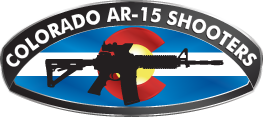https://qph.fs.quoracdn.net/main-qim...19111f1bebb63M
What ever happened to the officer that ignored the warning report of the imminent attack on Pearl Harbor?
That officer was Kermit Tyler. He received the report of aircraft approaching Pearl Harbor and told the privates reporting the radar images not to worry.
To familiarize pursuit pilots with the new radar systems being installed around the Hawaiian Islands, Army Air Forces Major Kenneth P. Bergquist, the operations officer for the Hawaiian Interceptor Command, arranged to have the various pursuit groups based in Hawai’i send pilots to the information center at Fort Shafter in Honolulu to work shifts with the air information controllers. The job of the controllers was to process and track reports coming into the center from the Signal Aircraft Warning Service radar stations which were positioned around the islands.
Kermit Tyler’s turn to learn this new technology came during the first week of December 1941. Not a good time. At 4:00 a.m. on Wednesday, December 3, Tyler arrived for his first four-hour shift in the information center. Officially, his job there was to assist the controllers in vectoring pursuit aircraft to meet any identified incoming enemy threats, however, he was really there to learn about this new process and how it worked. Though he had received a brief orientation in mid-November, Tyler received no training before, during, or after his first shift and nothing of note occurred during that first four hours. In other words, he was totally inexperienced. Therefore, when Tyler showed up to work his second shift at 4:00 a.m. on Sunday, December 7, 1941, he had no reason to think that morning would be any different. How wrong he was.
At 4:00 a.m. on Sunday, December 7, 1941, Tyler opened the air information center at Fort Shafter. In the center with him that morning was roughly a half dozen enlisted men. He was the only officer present. The first three hours of that morning’s four-hour shift passed by uneventfully. The radar stations positioned around the islands would all shut down at 7:00 a.m. So Tyler in the information center did not expect to receive any calls during the last hour of the shift.
According to Tyler, at approximately 7:15 a.m., the information center received a call from the Opana Radar Station located in the north end of O’ahu. The radar technicians on duty that morning, Army Privates Joseph Lockard and George Elliott Jr., reported the “largest blip they had ever seen” on their SCR-270 radar’s oscilloscope. The course they reported the incoming contact on was almost a direct line between San Francisco and O’ahu. Hearing that, and recalling that he had heard Hawaiian music playing without interruption a few hours earlier, Tyler reasoned that the blip the radar technicians were seeing was not an enemy formation, but was instead a flight of friendly bombers approaching O’ahu from San Francisco which were expected. Tyler told Lockard and Elliott not to worry about what they were seeing.
Shortly after talking to Tyler, Lockard and Elliott went off duty. History has shown what happened next. At 7:55 a.m., approximately 53 minutes after the “blip” representing the Japanese attack aircraft had been seen on the SCR-270 radar’s oscilloscope, and 40 minutes after Tyler told Lockard and Elliott not to worry about what they were seeing, the attack on Pearl Harbor began. The Japanese assault left thousands dead, caused millions of dollars in damage, and catapulted the United States into World War II. But what happened to Kermit Tyler after December 7, 1941? Was he court martialled?
Beginning shortly after the Pearl Harbor attack, Tyler was called before several boards of inquiry to account for his actions on the morning of December 7, 1941, the first being the Roberts Commission. He was later called to appear before boards of inquiry set up by both the Army and Navy. All of the boards Tyler went before found that he had not been derelict or negligent in his duties and was not culpable for the results of the attack on Pearl Harbor. Most focused on the fact he had no training.

